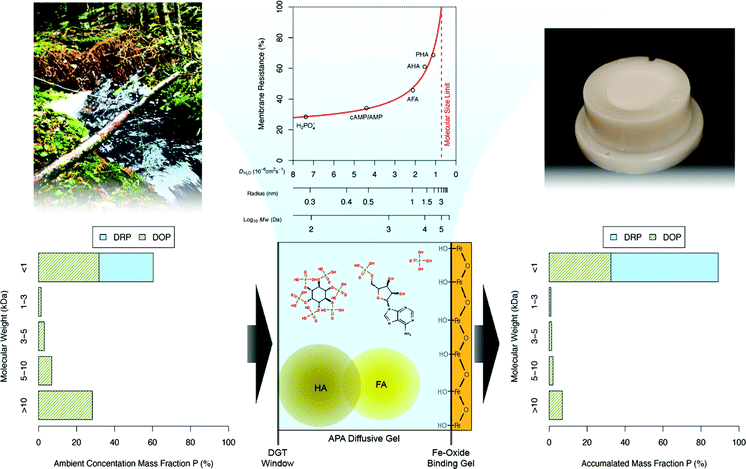Improving our insight into nutrient cycling in lake systems is essential to appropriately tackle the problem of eutrophication. Researchers from the University of Oslo and the Norwegian Institute for Water Research present a technique for monitoring bioavailable phosphorous (P) concentrations, which can provide advantages over conventional water sampling and potentially open an exciting new direction for research in this field.
It is widely established that eutrophication causes serious deterioration of fresh and marine waters. The primary cause is an excessive input of plant nutrients (e.g. N and P) to water courses from human activities such as agriculture or sewage treatment, causing excessive development of algae, which severely disturbs aquatic ecosystems. The WHO has highlighted the key environmental and health risks associated with eutrophication and the need to adequately tackle this problem.
Current abatement actions, such as redirecting sewage wastewater and reducing the P input from agriculture have had limited effectiveness in many cases. This has brought attention to the role of the background flux of P in river catchments; for example, the input of Dissolved Natural Organic Matter (DNOM) and in particular the role of bioavailable low-molecular-weight organic phosphorus (LMWOP) compounds such as nucleic acid derivatives, phospholipids and sugar phosphates.
The fluctuating and very low concentrations of these compounds present major challenges in the monitoring of the bioavailable P fraction by conventional methods. This study by Christian Wilhelm Mohr and co-workers presents a technique for monitoring the ambient concentrations of dissolved reactive phosphorus (DRP) and dissolved organic phosphorus (DOP), especially the LMWOP DOP sub-fraction, using Diffusive Gradient in Thin Films (DGTs).
DGTs have been used as passive samplers based on their linear diffusive uptake of components, which allows time average concentrations to be determined for species commonly present in concentrations close to the limit of detection. However, the present challenge is how to use the amount of analyte determined from the DGTs to predict the ambient concentration of LMWOP and therefore gain better insight into the long- and short-term variation of DRP and DOP concentrations in different systems. Consequently, the ultimate aim is to use this technique to carry of real-world risk assessments.
In this study, DGTs fitted with phosphate adsorbent Fe-oxide binding gel were used to collect the orthophosphate and LMWOP compounds, adenosine monophosphate (AMP) and myo-inositol hexakisphosphate (IP6) respectively, in experimental test solutions. Theoretical modelling was used to determine diffusion coefficient (D) values, a key parameter relating the amount of analyte measured by the DGT to the time averaged ambient concentration. Validation of DGT data was performed by comparing concentrations of P fractions determined in water samples, collected via conventional means with concentrations using DGT, in three 1st order streams draining different types of catchments (e.g. forest, mixed and agriculture).
The authors discuss the appropriate use of DGT sampling data, explaining that because the relative distribution of LMWOP molecules will differ between different catchments, a range of model-derived D values should be investigated. It is suggested this could allow a ‘best fit’ of D values for different sites and a “tailored” D value for different individual water bodies to be determined in order to practically use the DGTs for estimating time average DOP.
It was shown that the DGT method was successful in the linear uptake of AMP and IP6, and could therefore potentially be applied to other LMWOP compounds. The catchment study indicated a reasonable agreement between the dissolved P fractions determined from water samples and by DGTs and that the stream water samples from the different catchments showed clear differences in relative and absolute concentrations of DRP and DOP. This study demonstrates that the use of DGT can help improve our insight into the cycling of P in eutrophic lakes and specifically the spatial variation of ambient levels of DRP and LMWOP in these systems. However, the models tested for estimating D for different LMWOP molecules are still too uncertain for practical use.
The authors note that more studies are needed to better quantify the distribution of DOP with molecular weight for a variety of catchments with different land-use. For example, further experimental and sampling studies will be needed to determine D values for a wider range of LMWOP molecules so that better calibration and validation of model performance can be performed and different environmental conditions (e.g. pH) can be investigated.
To access the full article, download a copy for free* by clicking the link below.
An in-depth assessment into simultaneous monitoring of dissolved reactive phosphorus (DRP) and low-molecular-weight organic phosphorus (LMWOP) in aquatic environments using diffusive gradients in thin films (DGT)
Christian Wilhelm Mohr, Rolf David Vogt, Oddvar Røyset, Tom Andersen and Neha Amit Parekh
Environ. Sci.: Processes Impacts, 2015, Advance Article
DOI: 10.1039/C4EM00688G
—————-
Ian Keyte is a Doctoral Researcher at the University of Birmingham. His research focuses on the sources, behavior and fate of polycyclic aromatic hydrocarbons (PAHs) in the atmosphere.
—————-
* Access is free through a registered RSC account.












